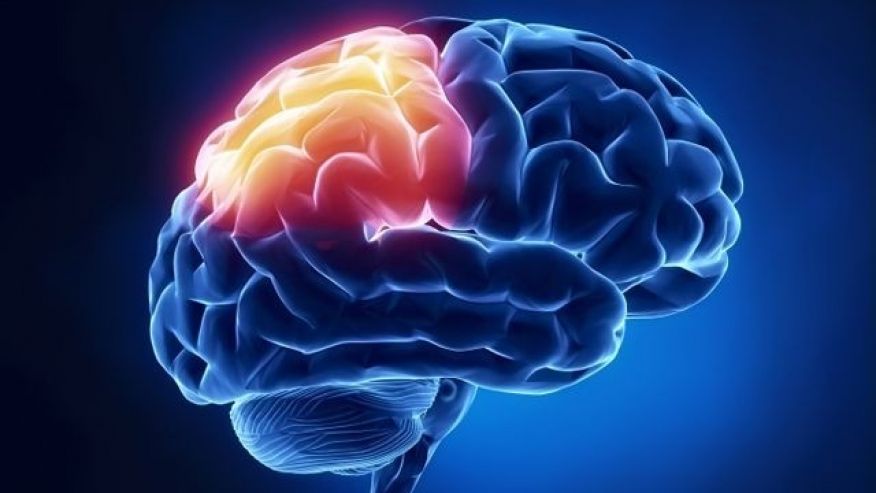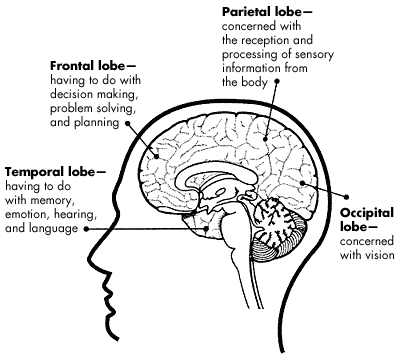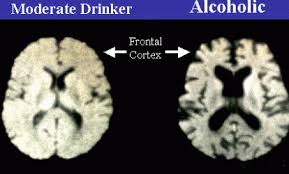Brain structures impairment prompted by addiction: The cerebral cortex

Brain structures impairment caused by drug addiction and misuse of alcohol
It is said that life stop the moment the brain stops functioning. The brain is therefore a very sensitive organ in the body that needs to be natured well for it to operate optimally. As we progress into the discussion, it is important to note that the brain is composed of many different parts otherwise known as regions and structures. Therefore the brain structures and regions main role is that of transmitting effective communications to various parts of the body. The transmission of communication enables the various regions and brain structures to coordinate their activities effectively say’s Doctor Dalal Akoury. Each of these regions and structures are independent and serves different purposes. One of the biggest enemies to these regions and structures is the problem of misuse of alcohol and drug addiction. This condition can alter these regions and structures.
Besides that, addictions can also alter the way brain regions function. And for that reason as we progress into this discussion, we are going to discuss the regions and structures which are affected by the addictive process. It is therefore very important to appreciate that complications of addiction can change the brain structures and their functions in very many ways. And for us to get these facts accurately, we are going to be speaking to the expert from AWAREmed Health and Wellness Resource Center under the able leadership of doctor Dalal Akoury to help us in reviewing the brain’s role in some of the commonly observed problems associated with addiction which may include the following: Drug-seeking and cravings, Habit formation, craving, withdrawal effects, and relapse triggers, Impaired decision-making, impulsivity, and compulsivity and Stress control and withdrawal.
Impaired Decision-making, Impulsivity, and Compulsivity
The cerebral cortex is the outer most layer of the brain. The cerebral cortex is further divided into four areas. These four areas are: the frontal lobe (or frontal cortex), parietal lobes (left and right), temporal lobes (left and right), and occipital lobes (left and right). Each area is associated with certain brain functions: One area of the frontal cortex is called the prefrontal cortex. It has a vital role in higher-order functions. These functions include language, spatial learning, conscious thought, judgment, and decision-making. The process of addiction can negatively affect this area and alter its proper functionalities.
The prefrontal cortex
This enables us to make rational, sound decisions. It also helps us to override impulsive urges. If acted upon, these impulses urges can cause us to act without thinking. This is usually not in our best interest. For instance, suppose I’ve had a bad day at work. I may have an impulsive urge to tell my boss exactly what I think of her. To act on this impulse is not in my best interest. Fortunately, my prefrontal cortex is functioning quite well. I still have my job!
Obviously, this ability to inhibit impulses is very helpful. It enables us to function well in society. It protects us from harm by allowing us to consider the consequences of our actions. However, when the pre-frontal cortex is not functioning correctly, the opposite occurs. Addiction causes changes to the prefrontal cortex. These changes account for two characteristics of addiction: impulsivity and compulsivity.
Impulsivity is the inclination to act upon sudden urges or desires without considering potential consequences. Sometimes people describe impulsivity as living in the present moment without regard to the future. On the other hand, compulsivity is a behavior that an individual feels driven to perform to relieve anxiety. Once a person performs the compulsive behavior, the anxiety goes away and restores comfort. Thus, the presence of these behavioral characteristics in addicted persons indicates that changes to the prefrontal cortex have occurred. Unfortunately, these changes also make the discontinuation of drug use more difficult.
When we talk of addiction changes brain structure and their functions, the message being delivered is that an addiction is a process that coordinates the transition from impulsive to compulsive behavior. Impulsivity occurs during the early stages of addiction. During this phase, people impulsively act on powerful urges to experience the pleasure of their addiction. Anxiety is not associated with the urges during these early stages. Instead, addiction reflects acting on impulsive desire to receive immediate pleasure from the drug or activity. People are not considering the future consequences.
Brain structures impairment prompted by addiction: Shifting progress of addiction
As addiction progresses a shift begins to occur. At this point, the compulsive aspect of addiction takes hold. When this shift occurs, people are no longer pursuing their addiction solely for pleasure. The compulsions compel them to participate in their addiction to relieve anxious, uncomfortable feelings. These may arise at the mere thought of stopping the addiction for any reason. At this later compulsive stage, “pleasure” comes in the form of relief from these anxious, uncomfortable feelings. Thus, despite the negative consequences of addiction, the addictive behavior continues in a compulsive manner.
Another way to describe the pre-frontal cortex is to think of it as a braking system. The pre-frontal cortex acts as the brain’s brakes. It sends out signals to inhibit particular behaviors or actions. When addiction damages this brain area, it limits the brain’s ability to control other behavioral systems as well. Imagine how difficult it would be to operate a car without brakes. At this point, we might say the brain is “high-jacked” by the addiction. The prefrontal cortex also projects to other brain regions associated with addictive problems. These include the reward system; memory and emotion; and stress regulation centers of the brain. Therefore, damage to the prefrontal cortex may further interfere with the functioning of these other brain regions as well.
Although addiction damages the brain’s brakes (pre-frontal cortex) this is not to say there is a complete loss of control. We are not slaves to our biology. We have a tremendous amount of control over our actions. This is true even when impulsive and compulsive forces are operating. This recognition is vitally important if someone wishes to recover from addiction. When a person consciously decides the costs of addiction outweigh its benefits, they become motivated and are able to stop. This allows them to actively counter the effects of addiction on the frontal cortex and other brain regions. Therefore if this description suits your situation, then you are in the right path and calling doctor Akoury today will go a long way in helping you solve all the addiction problems you may be struggling with.
Brain structures impairment prompted by addiction: Cerebral Cortex
http://regenerativepotential.com/integrativeaddictionconference/













